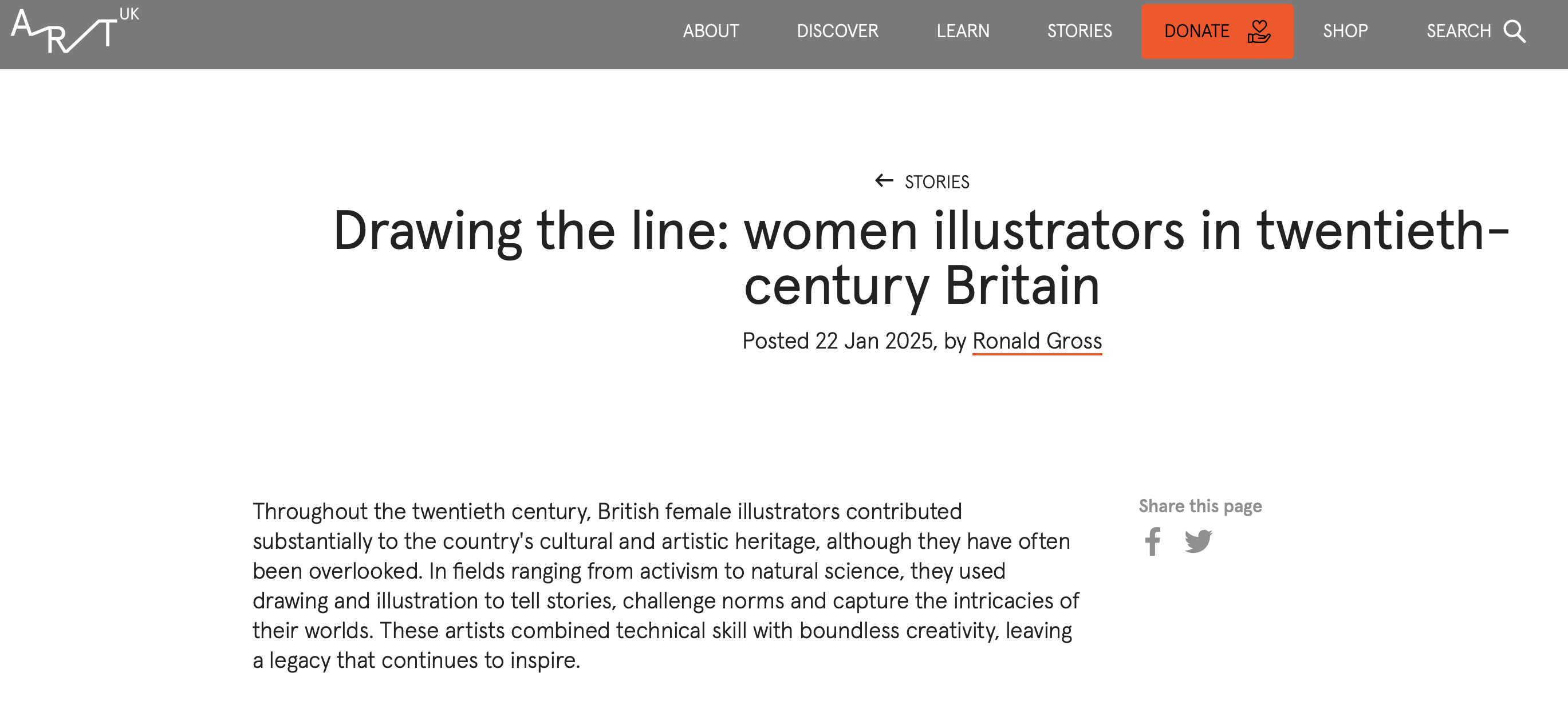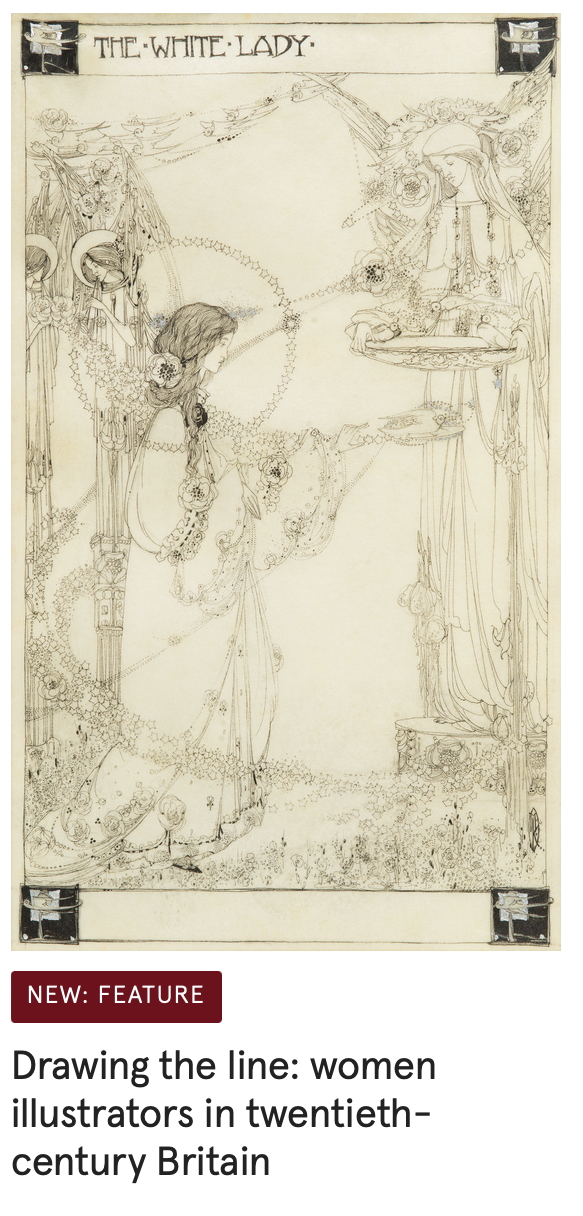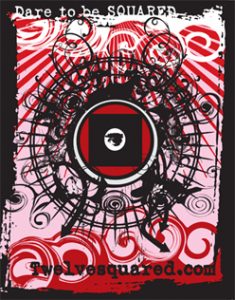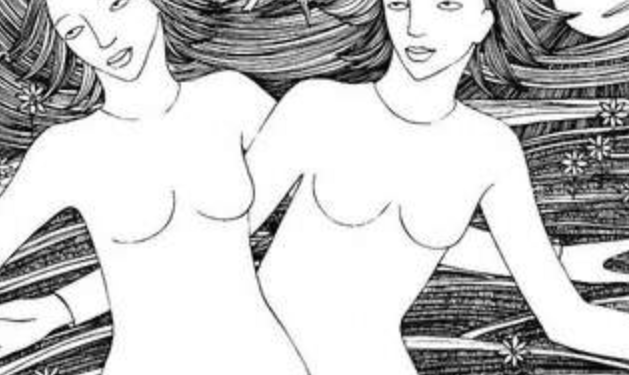I was recently commissioned to write an article on drawing from ArtUK using artists from their extensive database. I chose to write an article about something I didn’t know much about, British Women Illustrators in the 20th century.
While working on Drawing the Line: Women Illustrators in Twentieth-Century Britain, I uncovered the remarkable contributions of female illustrators who shaped British visual culture in unique ways. From Beatrix Potter’s enchanting children’s book illustrations to Jessie Marion King’s Art Nouveau masterpieces, these artists demonstrated how drawing and illustration could bridge the gap between fine art and everyday storytelling.

I learned how many women turned to illustration as a viable professional medium during a time when opportunities in fine art were limited. Their work offered a fascinating blend of technical precision and emotional depth, whether in scientific drawings, book illustrations, or intricate designs for textiles and posters. Delving into the lives of artists like Gwen Raverat and Hannah Frank, I gained insight into how personal vision and cultural movements, such as the Arts and Crafts style, shaped their work.
Women illustrators were pioneers in making art accessible and functional, challenging gender norms, and proving that “practical” art forms could carry profound artistic merit. If you’d like to learn more about these extraordinary artists and their cultural legacies, read the full article at Art UK.


